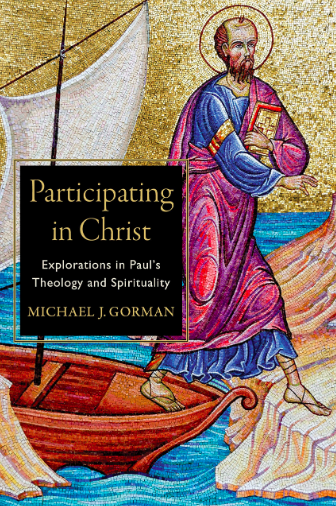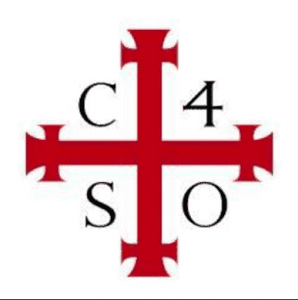 What is liberation theology? It is fair to follow that up with What kind of liberation theology? It is also fair to ask When was liberation theology? Let’s begin with this: modernity created an all-encompassing narrative rooted in social and economic realities that buttressed those in power with structures and ideologies that kept power in those hands. During the 1960s (roughly) a new mindset, a new worldview, and new theology arose from those out of power. As Roger Olson summarizes it:
What is liberation theology? It is fair to follow that up with What kind of liberation theology? It is also fair to ask When was liberation theology? Let’s begin with this: modernity created an all-encompassing narrative rooted in social and economic realities that buttressed those in power with structures and ideologies that kept power in those hands. During the 1960s (roughly) a new mindset, a new worldview, and new theology arose from those out of power. As Roger Olson summarizes it:
Especially oppressed minorities and women began to point out the tendency of modernity to promote domination by educated and economically privileged people. So far, anyway, they pointed out, it had not done much for African Americans, women and people of the Global South (what was then called the Third World)[in The Journey of Modern Theology, 504].
One of the dominant responses to this power imbalance — or systemic injustice against minorities — is liberation theology, and Roger Olson maps eight themes that are featured in most forms of liberation theology (Latin American, African American, feminist and womanist criticisms). A critical element of most forms of theology is power: those in power have a theology that props up that power, and liberation theology emerges from those not in power. Hence, the power structures are more or less invisible to those in power. Principal and representative thinkers for Olson include Gustavo Gutiérrez, James Cone (pictured and given a separate sketch in Olson), and Rosemary Radford Ruether.
Here are Olson’s eight themes:
1. Olson: “The place to begin in understanding liberation theology is at the deepest level—liberation theology’s driving motives. Karl Marx famously said that philosophy before him had attempted to understand the world while his goal was to change it. That approach is common to all liberation theologies—to change society more than understand God. They all think understanding God and changing society go together, but their priority is not intellectual discovery of new thoughts about traditional Christian doctrines. Their priority is promoting fundamental changes in the way society is ordered and that at its deepest levels” (509).
2. Olson: “A second common feature is liberation theology’s starting point, which is praxis…. In the case of all liberation theologies, the praxis from which theology begins and on which it reflects is solidarity with the oppressed in their struggle for liberation, in other words, denunciation and annunciation” (510).
3. Olson: “A third family resemblance of liberation theology is its context. According to all liberation theologians, theology should not be universal in the sense of the same everywhere. How can theology be the same in an affluent, all-white, North American suburb as in a South American barrio or favela where children go hungry and people live in subhuman conditions? Theology should be local, all liberation theologians agree” (511).
4-5. Olson: “A fourth common feature is twofold: God has a ‘preferential option’ for the poor and oppressed, and the poor and oppressed have a ‘privileged insight into God.’ This double-sided principle has been called the “epistemological break” that sets liberation theology apart from every other form of theology” (511-512).
6. Olson: “Sixth, all liberation theologians agree that there is a consciousness of oppression rooted in oppressed experience and that this is both a source and norm for theology. … Out of women’s experience arises what Ruether calls the feminist critical principle: ‘Whatever denies, diminishes, or distorts the full humanity of women is… appraised as not redemptive… [It] must be presumed not to reflect the divine'” (512-513).
7. Olson: “Seventh, all liberation theologies agree that liberation of the oppressed is a work of the oppressed themselves. They cannot and should not wait for the privileged group in society to extend equality; they should take it” (513).
8. Olson: “Eighth, liberation theologians believe that social reform, such as religious political progressives advocate, is too slow and timid. Liberation theology is not the old social gospel; it is revolutionary. Of course, the moment someone mentions ‘revolution’ people get nervous about violence. …However, liberation theologians point out the irony of Americans celebrating their own violent revolution every July 4 while condemning other peoples revolutions. The point here is that liberation theologians, including feminist theologians, are not calling for gradual reform of social orders; they are calling for radical change in social structures and customs” (514).
Olson’s summary statements may go even deeper than these eight themes:
The ways in which liberation theology represents a paradigm shift in theology should be obvious. Objectivity is not valued; involvement is the door to good theology. Correct doctrine or right understanding is not the goal; right praxis and social revolution are the goals. Knowledge is tied inextricably with oppressed consciousness and the struggle for liberation. Progress and development are not the keys to social change; revolution is. Another way in which liberation theology represents a paradigm shift is its response to modernity. For liberation theologians, the challenge of modernity is not so much unbelief as oppression, and the Enlightenment is viewed as mostly beneficial to the privileged classes. … To them, modernity has been a mixed blessing. It cracked open the door to equality for all (as in the French Revolution), but it did not push it open or even allow the oppressed to move through it. They all say that theology needs to stop obsessing about modern skepticism and unbelief (after all, all the intellectual answers have been given) and focus attention on the poor, the oppressed, left behind by modernity’s failed project of progress (515, my italics).
I would emphasize one point, one running throughout Olson’s summary: the focus of liberation theology is society revolutionized in terms of justice for the poor in a new socio-economic order.










